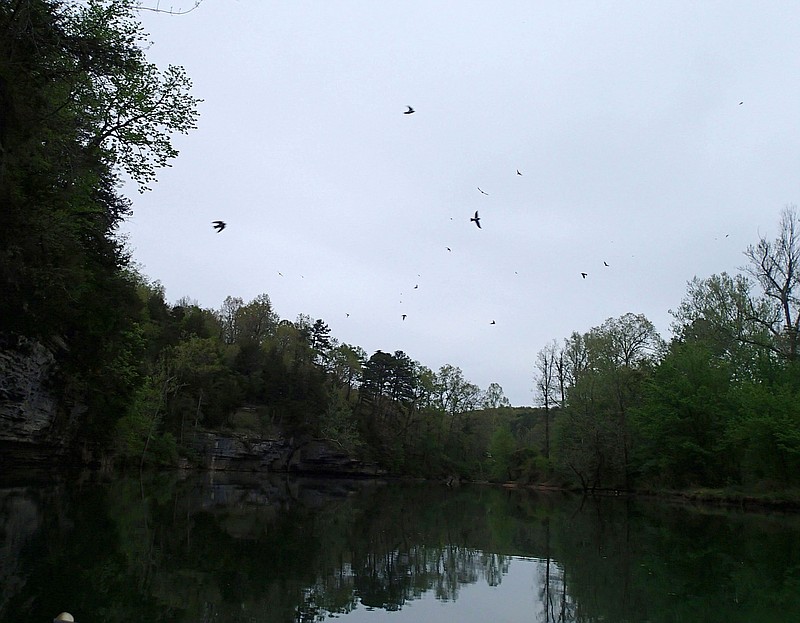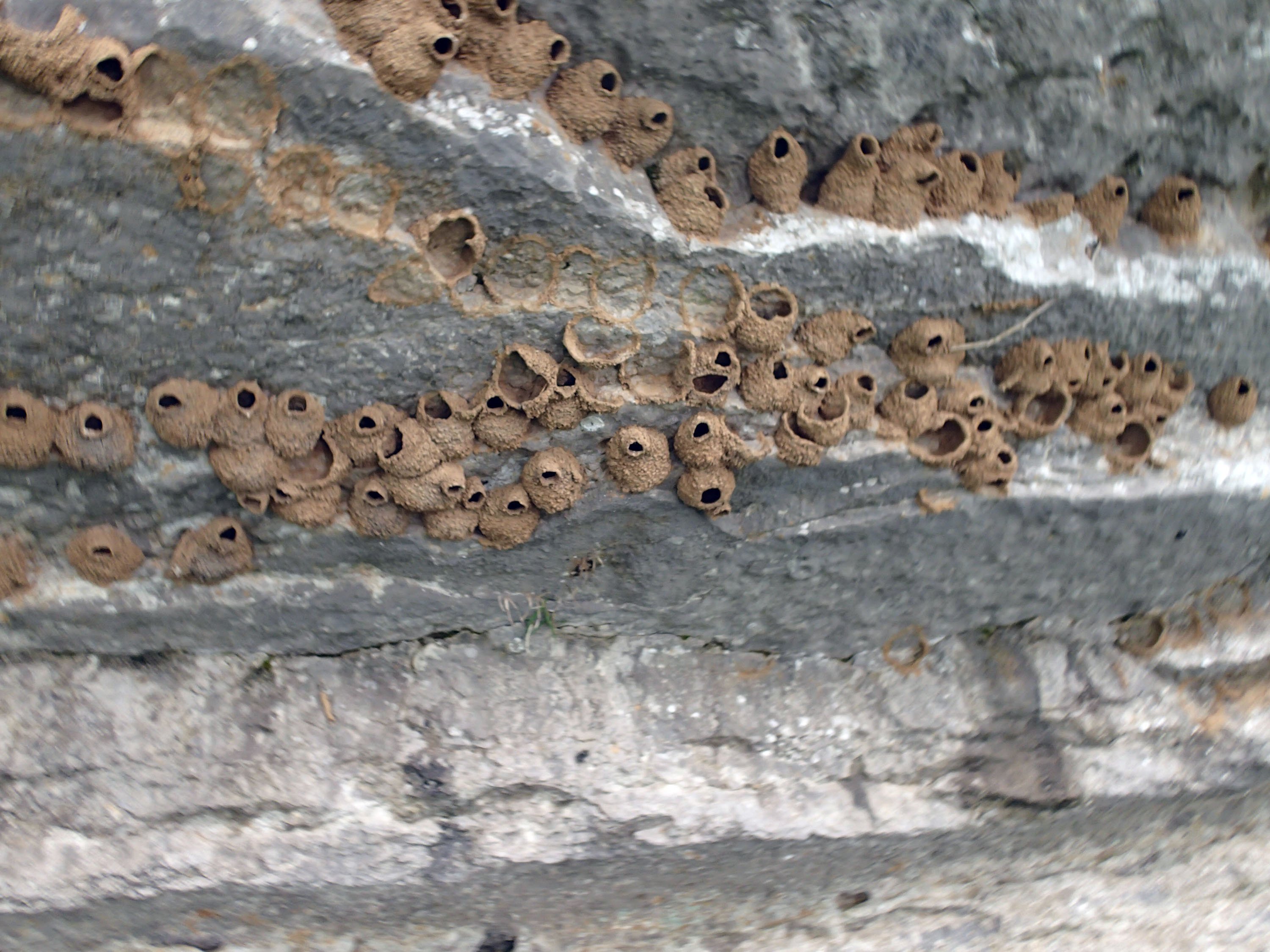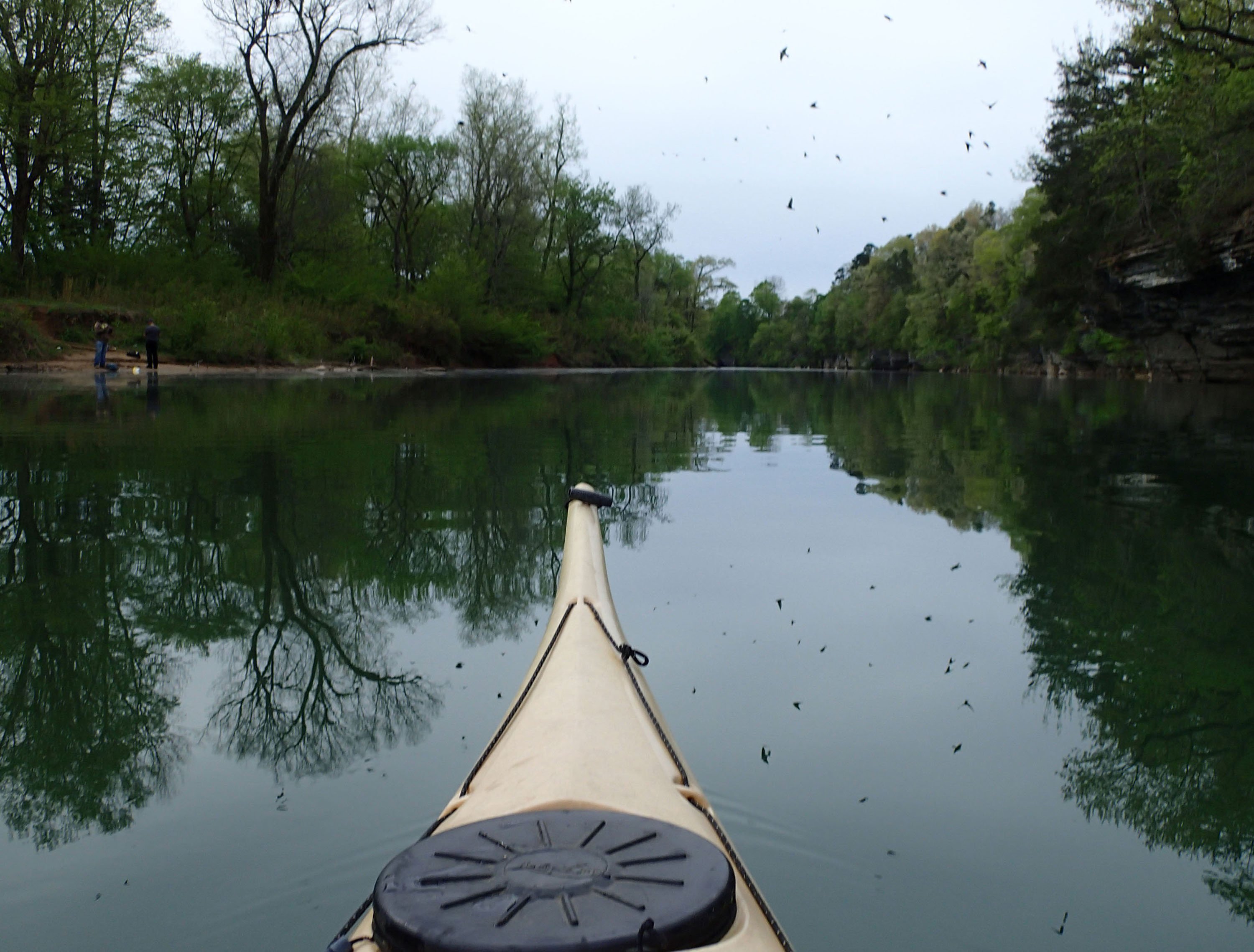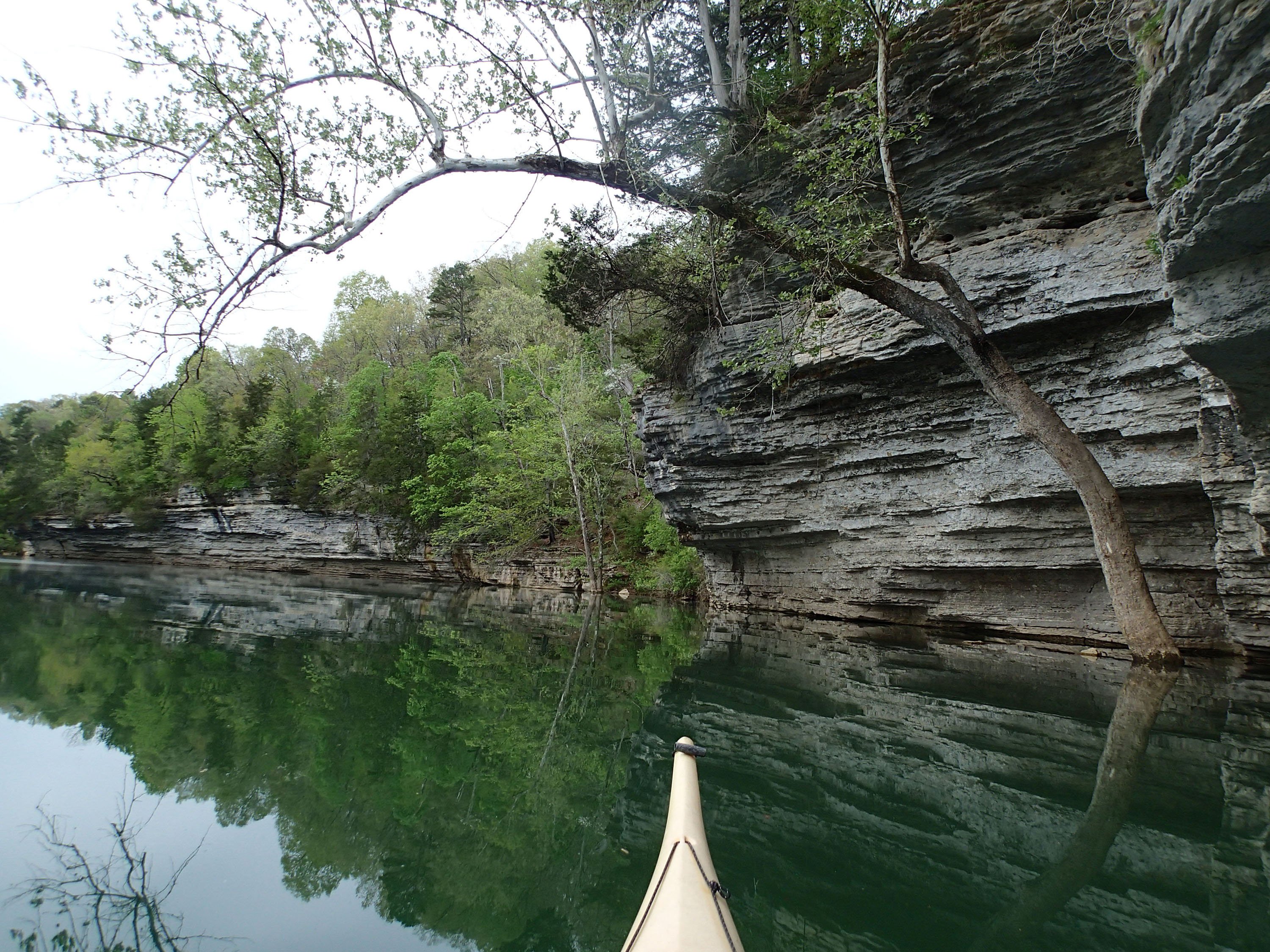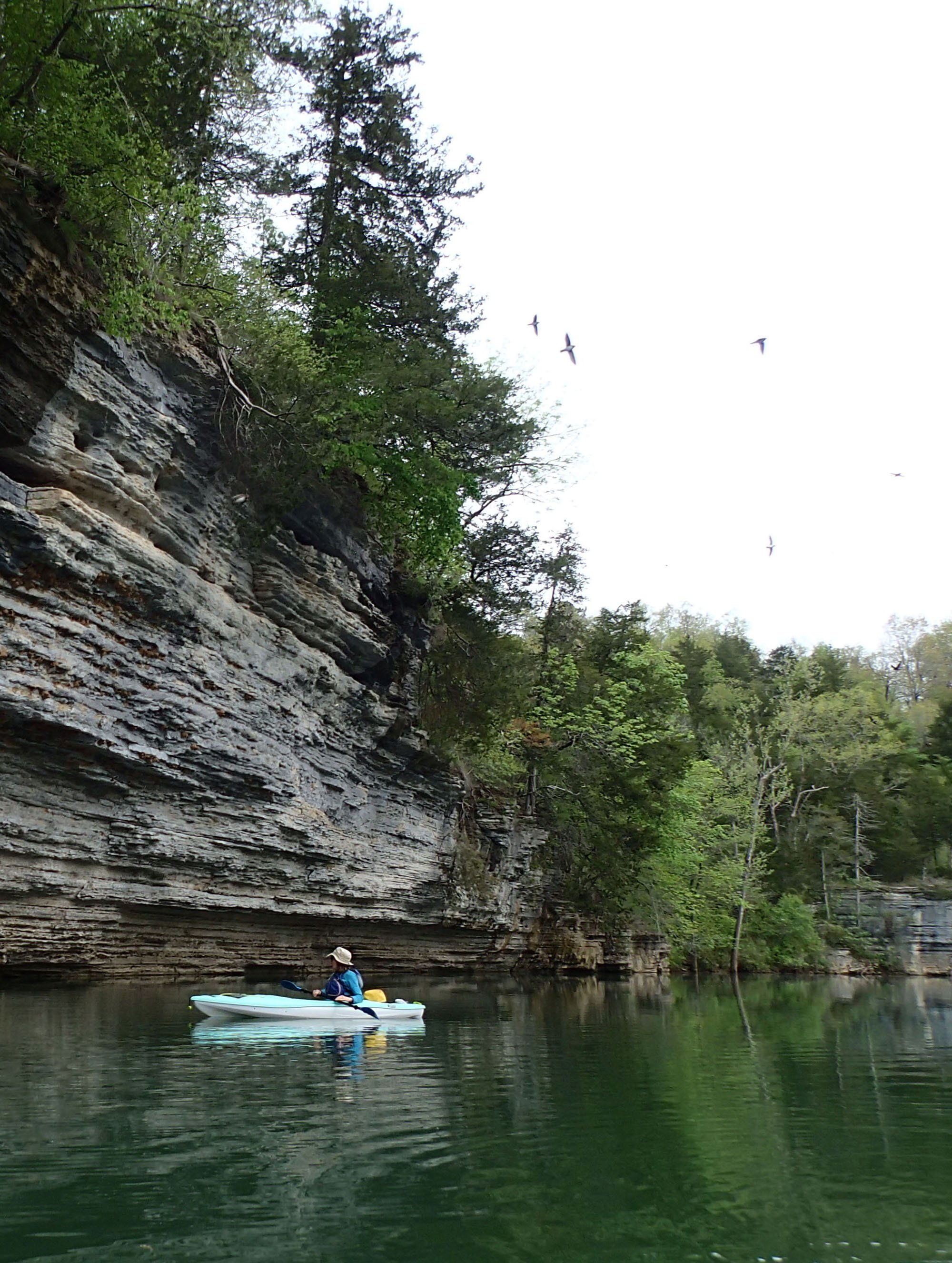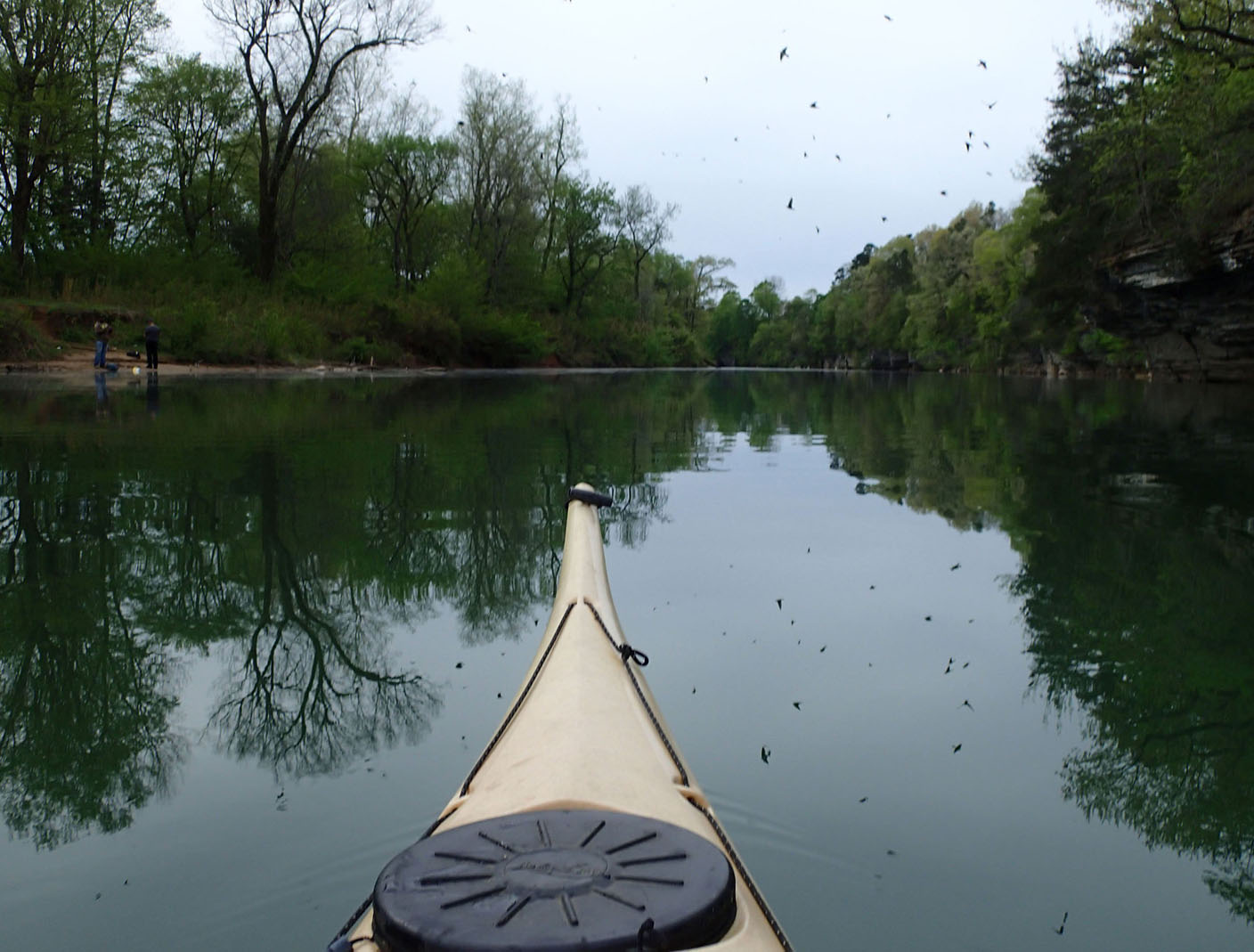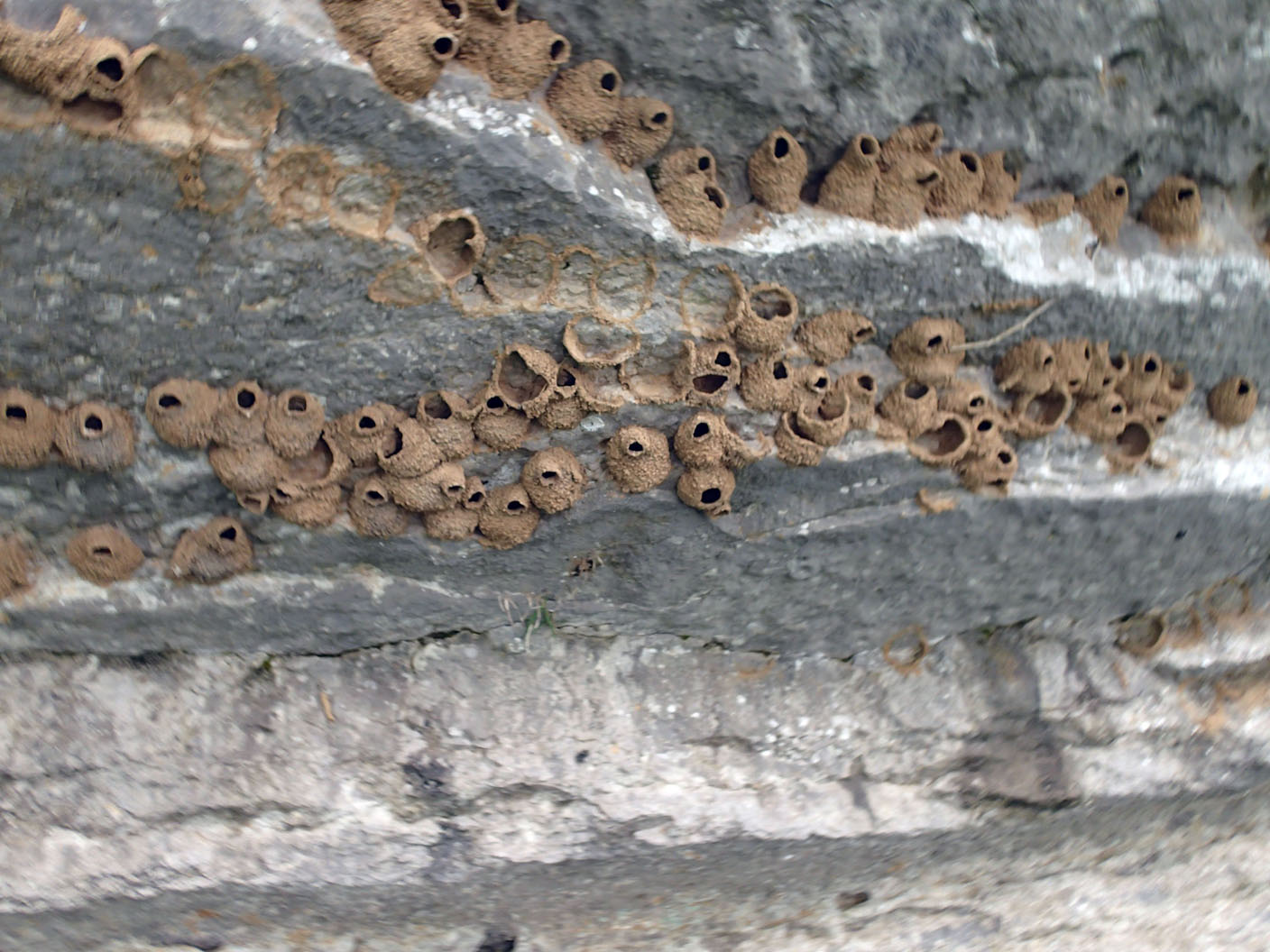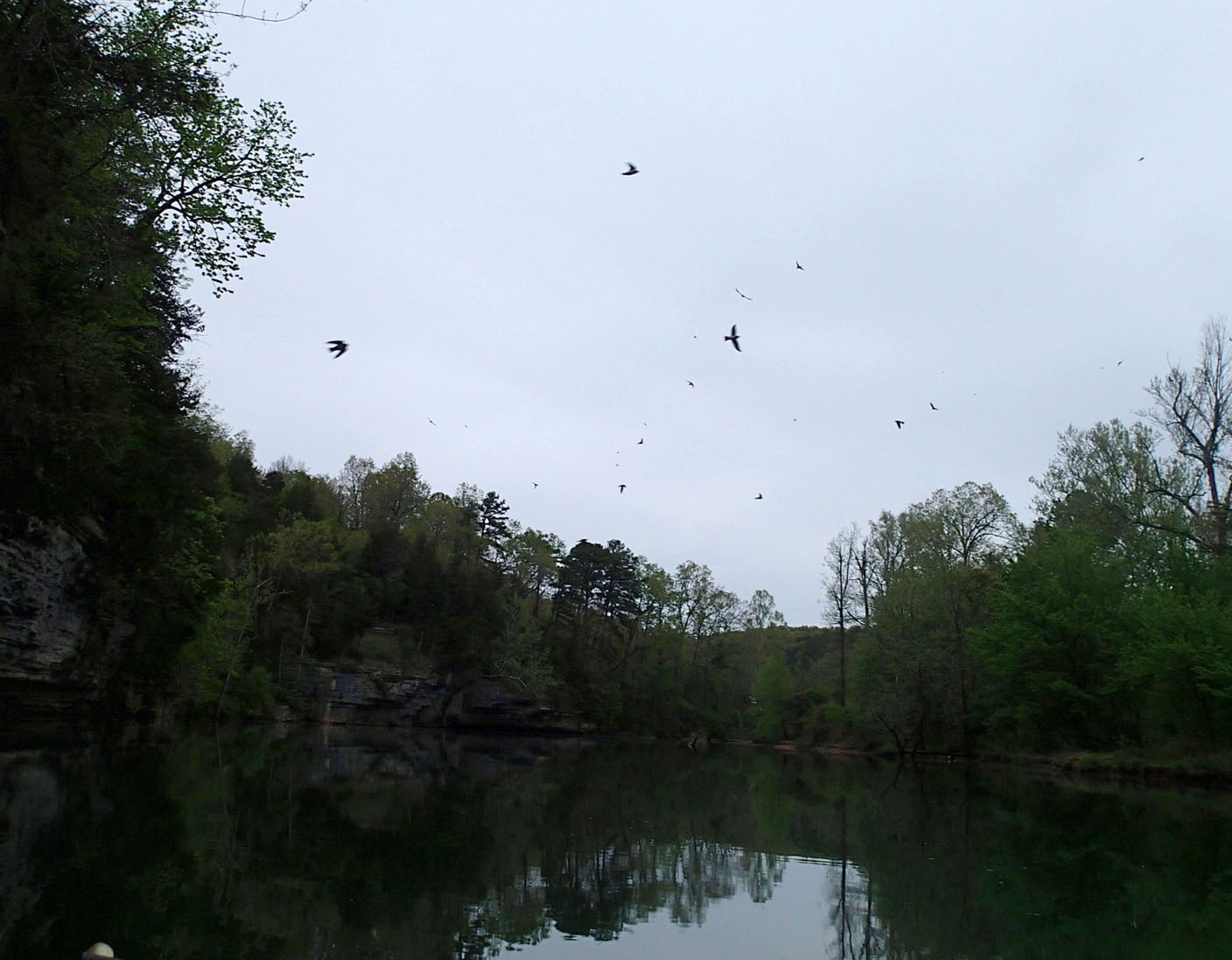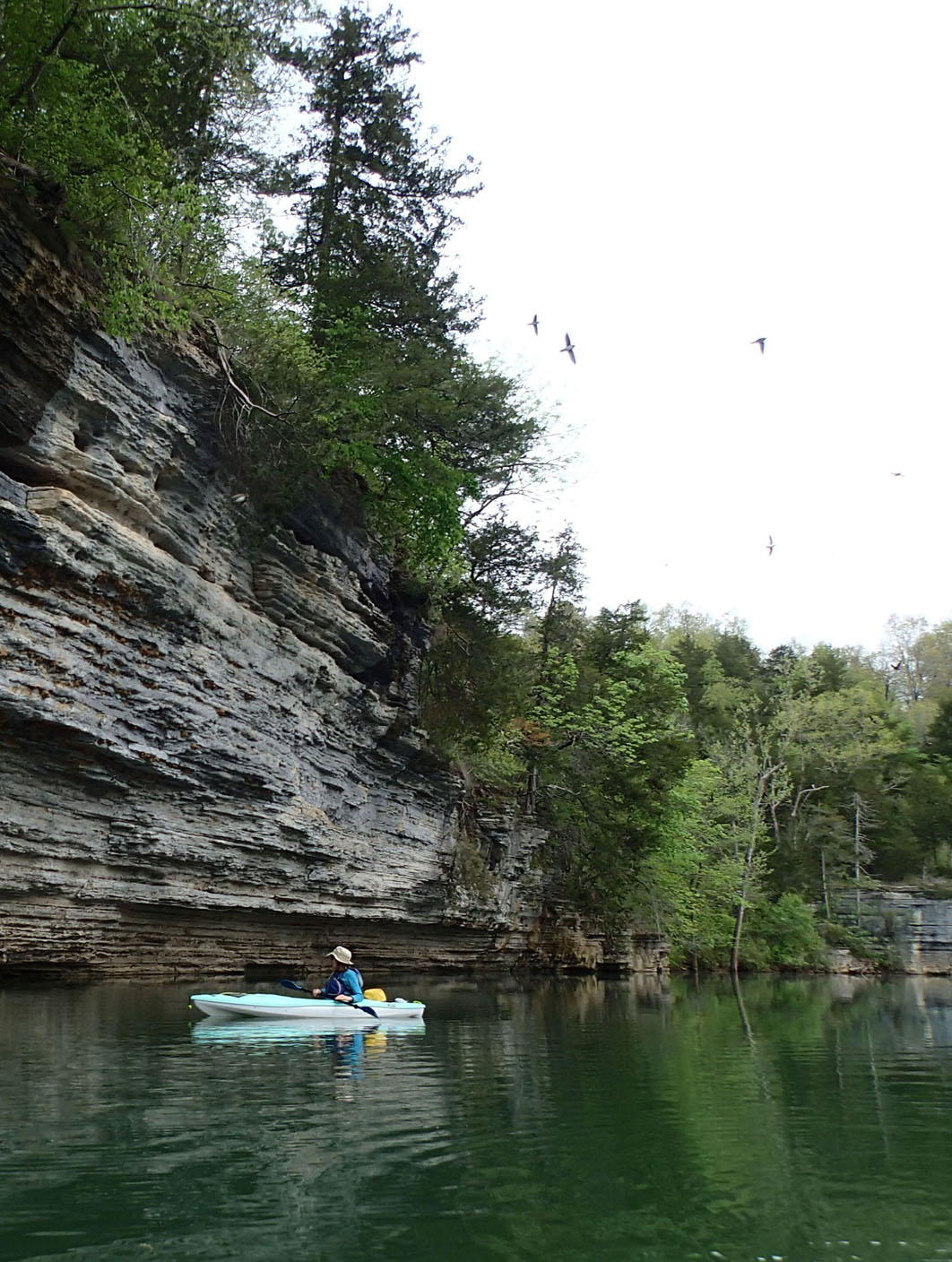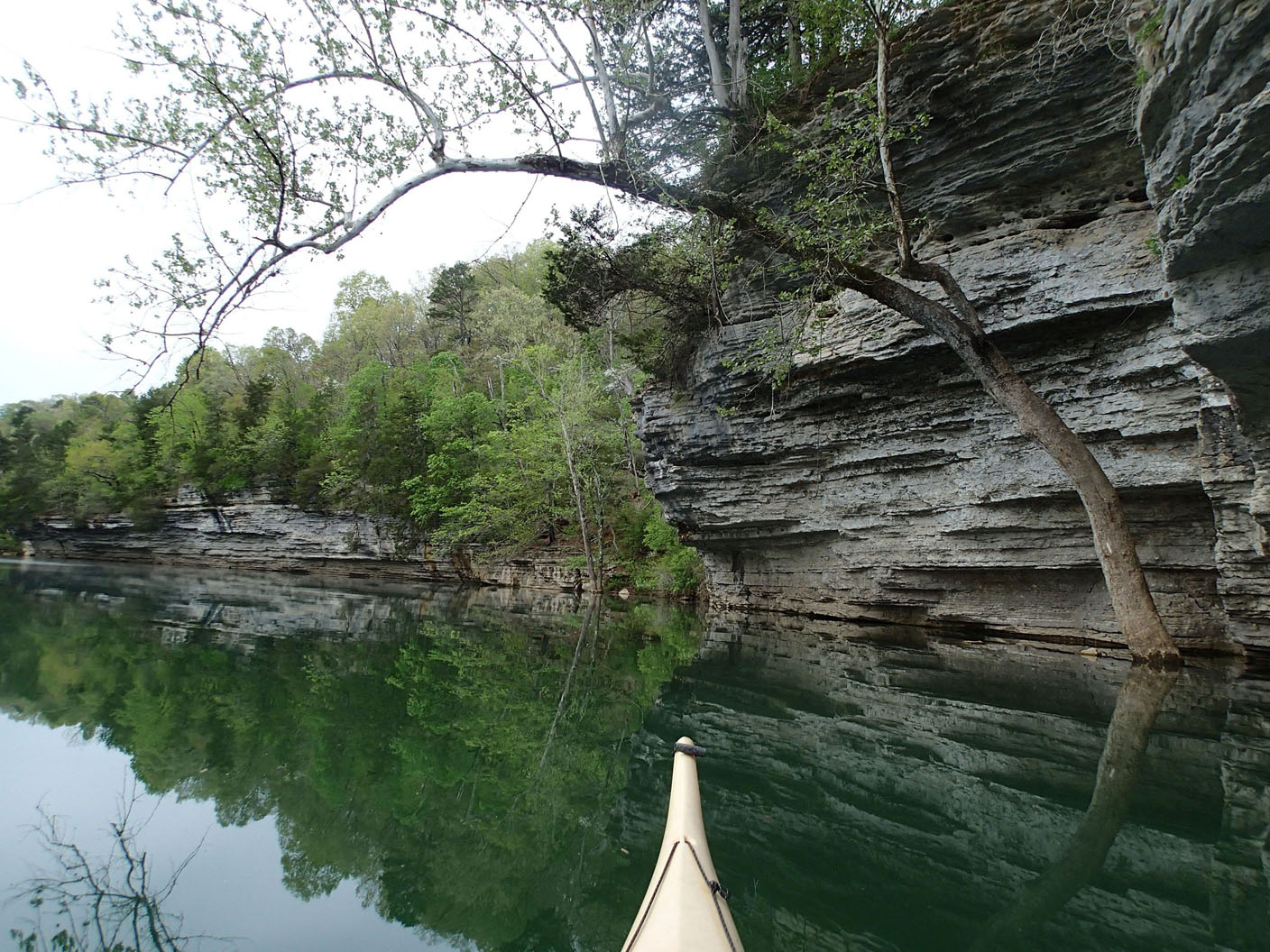"I just flew in from South America, and boy, are my wings tired!"
That's what a cliff swallow might say, if cliff swallows could talk. After all, they've just flown some 3,000 miles to Northwest Arkansas from South America, where the birds spend the winter.
Cliff swallows were the last birds two paddlers expected to see when they launched kayaks into a backwater area of Beaver Lake on April 14.
"Too early," one of them piped. Wrong. Not long after plastic hulls hit the water, cliff swallows could be seen flitting about hither and yon over the still water. Dozens, maybe hundreds, of birds dipped, darted and spiraled near their nest colony along a craggy cliff.
Karen Mowry of Nob Hill, east of Springdale, drifted in for a closer look. "They're swarming around like a bunch of bees," she said, marveling at the feathery show.
In front of her boat, dozens of softball-sized mud nests held fast to the bottom of rock overhangs, looking like pint-sized moonshine jugs colored light brown.
This particular hotbed of cliff swallow activity is along the War Eagle River, a tad over a mile downstream from War Eagle Mill. When the water level at Beaver Lake is high, as it is now, lake water backs up all the way to the low dam at the mill.
There's no current, which makes it easy to enjoy a leisurely drift and see the cliff swallow show. Bluffs along Beaver Lake and the region's rivers are the summer home for these quick-flying birds that are the size of a sparrow. It's here and elsewhere in the nation that cliff swallows, and other swallow species, raise their young.
Cliff swallows seem mighty particular about which bluffs they like for constructing their nests of mud. While one bluff may have dozens of nests, a similar bluff close by won't have any. Bridges over water are also preferred building sites for cliff swallows.
Joe Neal of Fayetteville, with the Northwest Arkansas Audubon Society, wasn't surprised at the mid-April cliff swallow sightings. Some arrive in late March, he said, but arrival is usually the first two weeks of April. Their numbers peak in May.
"Their first order of business is to fix up their nests," noted Neal, who's written several books about birds and birding. Swallows may use the same nests spring after spring, building or repairing them with individual pellets of mud they pick up nearby.
The birds don't waste time laying three to four eggs. "Sometimes they'll lay even before they're finished with their nests," Neal explained.
Young cliff swallows hatch in about 15 days. A telltale sign that young have hatched are white splotches at the nest openings. Neal noted that cliff swallow hatchlings back their tiny rear ends up to the opening and do their bird restroom business.
Swarms of cliff swallows gather insects to eat and take back to their young. These babies are born featherless and with eyes closed, Neal said. They're ready to fly in about 20 days.
Once the youngsters are gone, the adults quickly bid farewell to their nests and start the long migration back to their winter homes in South America as early as mid-July. Cliff swallows make the flight primarily over land.
A prime spot to see swarming cliff swallows by boat at Beaver Lake is along a tall bluff north of Rocky Branch Park commonly called Red Bluff. There's a large Army Corps of Engineers location marker with a big blue 7 on it. The swallow nests are to the left of the marker along the bluff overhangs.
Cliff swallows aren't the only swallows that arrive here in spring. Barn swallows, tree swallows and and rough-winged swallows are in the mix.
A good place to see different swallow species, Neal said, is the Arkansas Game and Fish Commission Charlie Craig Fish Hatchery at Centerton. Viewing is best when the wind is from the north, Neal noted.
__
Amazing cliff swallows
Cliff swallows are long-distance migrants that winter in southern South America. They generally spend three months in North America, three months migrating south, three months in South America and three months migrating north.
Insects are their primary food, but they occasionally eat berries.
-- Source: National Audubon Society

